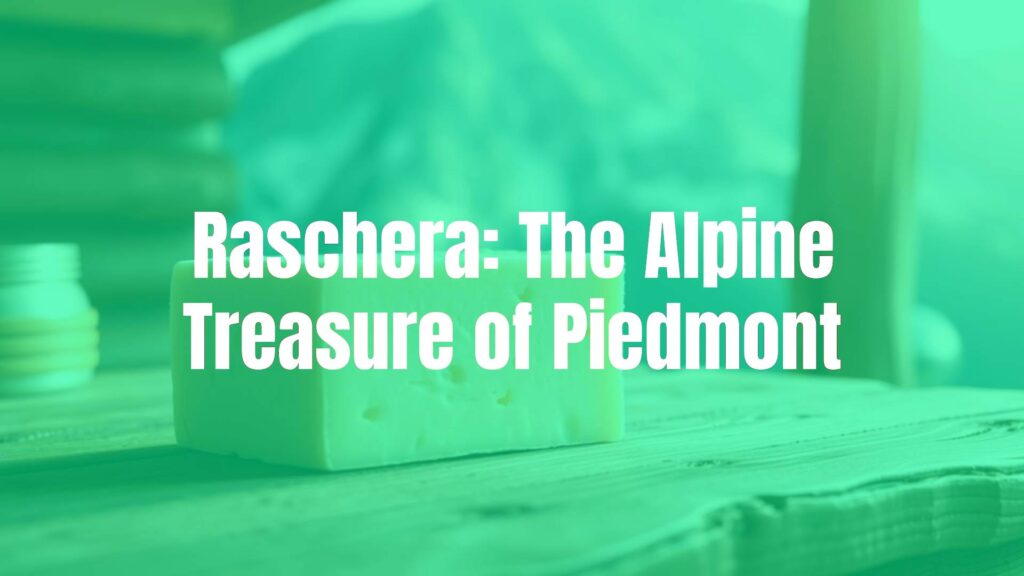Introducing Raschera Cheese
Raschera is a semi-hard, cow’s milk cheese from the Piedmont region of northwestern Italy, particularly renowned in the valleys surrounding the province of Cuneo. Distinguished by its flexible production and protected by DOP (Denominazione di Origine Protetta) status, Raschera is cherished for its smooth texture, delicate aroma, and subtle yet lingering flavor profile.
Defining Characteristics
This cheese typically comes in two traditional shapes: cylindrical and the more distinctive square, which is a nod to old Alpine practices of maximizing space during transport. Raschera features a thin, pale rind with occasional reddish or grayish hues, enclosing an ivory to pale yellow paste. Studded with small, irregular holes, its interior is supple and elastic, mellow on the palate with a faint, pleasant tanginess – a result of the unique Alpine pastures and mixed animal milk occasionally used in artisan batches.
Historical and Regional Roots
The origins of Raschera can be traced to the pastoral traditions of the Piedmontese Alps, with documentation referencing its production since the 15th century. The cheese takes its name from the picturesque Lake Raschera, located on the slopes of Mount Mongioie, a prime grazing destination for herds throughout the summer months. This alpine context has played a vital role in shaping the cheese’s characteristics; herders historically crafted Raschera as a way to preserve surplus milk and feed communities before winter’s arrival.
Production Insights
Raschera is crafted primarily with raw or pasteurized cow’s milk, though traditionalists sometimes blend in small amounts of sheep or goat milk for accentuated complexity. The milk is curdled with natural rennet and gently pressed to achieve its compact texture. The cheese matures for at least one month, developing its signature aroma and flavor. Extended aging imparts a firmer texture and bolder taste, highly prized among aficionados.
Cultural Role and Gastronomic Pairings
Emblematic of its alpine homeland, Raschera embodies local heritage and continues to be celebrated at regional markets and food festivals. It represents the ingenuity and resourcefulness of mountain cheesemakers, being both a daily staple and a specialty worthy of festive occasions.
Raschera’s gentle complexity makes it a versatile table cheese. It is commonly enjoyed alongside hearty rye or whole-grain breads and pairs beautifully with fruit preserves or fresh apples. The cheese melts well, making it a delightful addition to rich risottos, polenta, or savory pies. Traditional Piedmontese cuisine often features Raschera in stuffed pastas, vegetable gratins, or as a finishing touch to soups.
Enjoyment and Serving Suggestions
To fully appreciate Raschera’s nuanced flavors, bring it to room temperature before serving. Savor it with medium-bodied red wines from the region, such as Dolcetto or Barbera, whose fruitiness complements the cheese’s mellow profile. For a more rustic experience, try pairing Raschera with a drizzle of mountain honey or alongside roasted root vegetables for a taste of the Alpine foothills.
Varieties and Unique Aspects
There are two principal varieties of Raschera recognized today: the generic version and “Raschera d’Alpeggio,” the latter reserved for wheels produced exclusively with milk from herds grazed above 900 meters during the summer. The mountain version boasts more pronounced herbal and floral notes, a testament to the Alpine grasses and wildflowers imbued in the milk.
Conclusion
Raschera stands as a testament to Piedmont’s rich culinary history, offering an approachable yet distinctive flavor profile shaped by centuries of alpine tradition. Whether enjoyed simply with bread or as a star ingredient in Piedmontese dishes, Raschera invites cheese lovers to savor a genuine taste of Italy’s mountain heritage.

